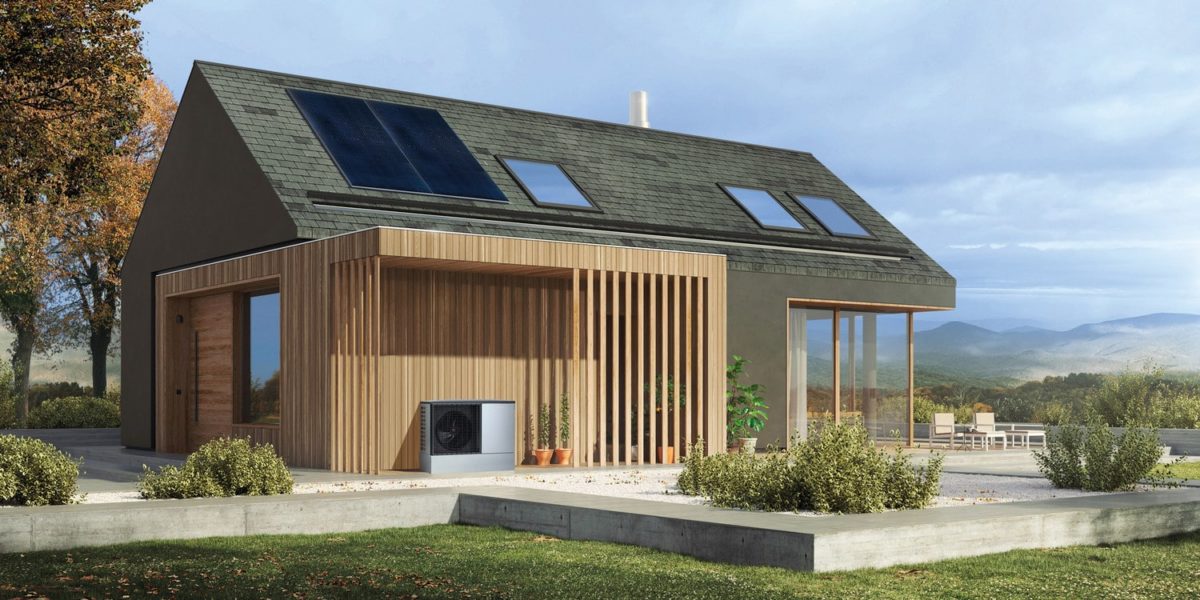Researchers from Germany’s Fraunhofer ISE and the Institute for Solar Energy Research Hamelin (ISFH) investigated the potential of photovoltaic-thermal (PVT) collectors in boosting the efficiency of residential heat pumps. They shared their findings in “Comparison of PVT – heat pump systems with reference systems for the energy supply of a single-family house,” recently published in Solar Energy Advances.
The scientists compared six reference systems to two PVT-heat pump systems using seasonal coefficient of performance (SCOP) and carbon emissions as metrics.
The first PVT-heat pump system utilizes an uncovered PVT collector with fins on the rear side to increase energy from the sun and ambient air. This system outputs 340 W with an electric efficiency of 17.5%. Its open circuit voltage is 48.0 V, and it has a short circuit voltage of 9.45 A. The second PVT-heat pump system uses a standard uncovered PVT collector with a power output of 300 W, electric efficiency of 18.3%, open circuit voltage of 39.9 V, and a short circuit voltage of 9.77 A.
For the heat pump side, the simulated systems use either a brine-water heat pump with the PVT collector as the single heat source, or a borehole heat exchanger (BHE) as an additional source. The brine-to-water heat pump has a thermal capacity of 9.1 kW with a coefficient of performance (COP) of 4.13 at a source temperature of 0 C and an output water temperature of 35 C (B0/W35). Both systems feature a 560-liter buffer domestic hot water storage tank, and the simulated ground-source heat pump uses a 70-meter-deep BHE.
The reference systems are powered by PV panels or the grid and include air-source and ground-source heat pumps, as well as gas condensing boilers, standalone or paired with solar thermal collectors. The PV modules in the reference systems have similar performance data to the PVT collector with fins. The air-source heat pump has a thermal heating capacity of 7.4 kW with a COP of 3.5 at A2/W35. The depth of the BHE for the reference ground-source heat pump is 110 meters, and the gas boiler has a nominal heating power of 15 kW, a water capacity of 7.3 liters, and an efficiency of 96.59%. The solar thermal system has an area of 15 square meters.
The study demonstrates that using PVT with fins as the sole heat source for heat pumps yields a SCOP of 3.49 with 20 square meters of PVT collectors and 3.80 with 30 square meters. In contrast, standard PVT systems have 8% to 14% lower performance and require larger areas to achieve comparable results. The researchers note that combining PVT-heat pump systems with a 70-meter-deep BHE produces SCOPs above 4.0, regardless of the specific PVT collector technology.
By comparison, an air-source heat pump generates a SCOP of 3.29 when paired with a 20 square meter PV system and a SCOP of 3.82 with a 30 m2 PV installation. The academics assert that the direct comparison of PVT-heat pump systems with air-source heat pumps indicates that PVT-heat pump systems are a competitive alternative to these reference systems.
The ground-source heat pump, when paired with a 110-meter-deep BHE, delivers a SCOP of 4.24, which increases to 4.87 when combined with a 30 m2 PV system. Therefore, the researchers emphasize that the PVT combination with BHE opens up the possibility of reducing BHE length by around 35% without affecting system efficiency.
Finally, the study finds that using PVT as the sole source of heat pump systems can reduce carbon emissions by up to 57% compared to gas condensing boilers. Combining PVT with smaller BHE heat pump systems could cut carbon emissions by up to 63%. Air-source heat pumps combined with PV can reduce emissions by 52%, and ground-source heat pumps with a 110-meter BHE could lower emissions by 63%, compared to the reference gas boiler.
This content is protected by copyright and may not be reused. If you want to cooperate with us and would like to reuse some of our content, please contact: editors@pv-magazine.com.



By submitting this form you agree to pv magazine using your data for the purposes of publishing your comment.
Your personal data will only be disclosed or otherwise transmitted to third parties for the purposes of spam filtering or if this is necessary for technical maintenance of the website. Any other transfer to third parties will not take place unless this is justified on the basis of applicable data protection regulations or if pv magazine is legally obliged to do so.
You may revoke this consent at any time with effect for the future, in which case your personal data will be deleted immediately. Otherwise, your data will be deleted if pv magazine has processed your request or the purpose of data storage is fulfilled.
Further information on data privacy can be found in our Data Protection Policy.